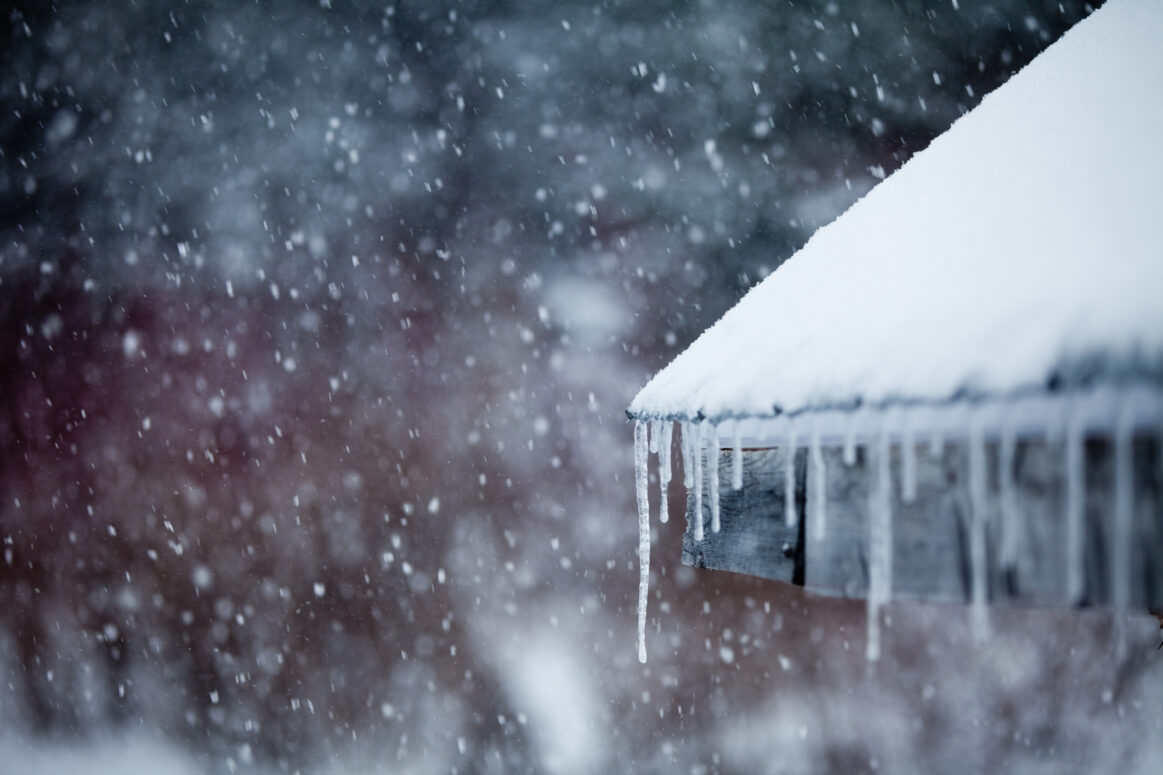By Barbara Ballinger
Winter is fast approaching, and the last thing a seller needs is a costly repair brought on by freezing temps or easily-fixed home maintenance issues. As the market shifts, homes in many places are staying on the market longer, so make sure your sellers are prepped for the long haul when it comes to a winter sale.
Use this 9-point checklist to ensure your seller’s home is maintained to withstand the dead of winter (which translates to a nice selling point for potential buyers). Some of these options are DIY-friendly but suggest a seller uses a professional where warranted.
Clear Gutters and Waterspouts
These should be cleaned by early winter so water is less likely to back up, freeze, and cause ice dams. Gutters should also be pitched away from a house so that water won’t run toward a foundation, says Brandy Simon with Chicago-based Engel & Volkers.
Seal Windows and Doors
Homeowners may want a blower door test to quantify the air leakage. If there are gaps, advise them to caulk around frames, which can save up to 20 percent of a home’s heating costs, says Jackie Mosher, COO at Dzinly, a virtual design platform. But advise homeowners not to seal frames so tightly since they want to be able to open them come spring, Mosher says.
Tune Up the Furnace
An HVAC expert should be called in to tune up and check a furnace before the weather gets very cold since many are swamped with repairs and replacements, says Dr. Ian Giammanco of the Insurance Institute for Business & Home Safety. Besides checking a furnace’s life expectancy, Mosher says the expert should change the filter, so it operates efficiently. (Homeowners can watch and learn to change the filter each month afterward or until the house sells.) Also, have homeowners check their carbon monoxide detectors and consider installing a programmable thermostat to conserve heat. Keeping the thermostat at least 55 degrees Fahrenheit will help them avoid pipes freezing, Giammanco says.
Insulate Attics and Crawl Spaces
To prevent ice dams and lower their heating costs, they may be wise to add insulation in the attic and below the roof, if they haven’t already. This keeps the heat in the home since the greatest amount of heat escapes at the top. “Blown-in insulation works best,” Mosher says. In a lower-level crawl space, they can close vents to prevent cold drafts from entering, says Tim Tracy at Groundworks, a Virginia Beach, Va.-based foundation repair firm.
Inspect the Chimney
If a house has a working fireplace, a qualified chimney sweep should clean the chimney and liner to remove toxins that can start a fire. Sellers should be sure the sweep also checks that the chimney vents properly and that its cap fits tightly so animals and snow can’t enter.
Examine the Roof
Because a roof is a home’s first layer of defense against winter damage, a specialist should be called. Nowadays, many use drones, but a physical inspection may detect certain problems, such as shingles popping up and leading to leaks, Dr. Giammanco says.
Check Trees
For extra roof precaution, suggest sellers have an arborist trim limbs that hang over the home. This helps ensure the home is safe if limbs fall during a snowstorm. The local power company should remove those any dangling powerlines as well, Giammanco says.
Turn Off the Outside Water
Before the first freeze, homeowners or a contractor should disconnect hose bibs and drain a sprinkler system to prevent pipes from bursting inside, says Jamie Aloia with the Stephanie Mallios Team, Compass Realty, in Short Hills, N.J. Advise sellers also to cover exposed pipes, check valves for leaks, and insulate spigots, Giammanco says.
Clear Walks and Foundation Walls
Remind sellers of the importance of keeping walks free of snow and ice so buyers and salespeople can safely enter their homes and walk their property, says Lauren Walz with Dawn McKenna Group, Coldwell Banker Realty, in Western Springs, Ill. Have lights turned on at dusk and night for extra precaution. And advise them to shovel snow near the foundation before it melts and possibly causes basement leaks, Tracy says.
Barbara Ballinger is a freelance writer and the author of several books on real estate, architecture, and remodeling, including The Kitchen Bible: Designing the Perfect Culinary Space (Images Publishing, 2014). Barbara’s most recent book is The Garden Bible: Designing Your Perfect Outdoor Space, co-authored with Michael Glassman (Images, 2015).
